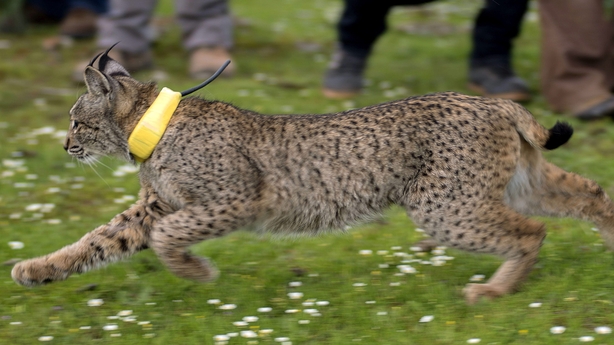At a nature reserve in southern Spain, four baby Iberian lynxes sleep peacefully beside their mother, part of a captive breeding programme that has brought the species back from the brink of extinction.
The El Acebuche breeding centre at the Donana National Park, home to one of Europe's largest wetlands, is one of five breeding sites set up in the 2000s to boost their numbers in the wild.
Four are in Spain and one in Portugal.
Slightly larger than a red fox, the Iberian lynx is distinguished by a white-and-black beard and black ear tufts.
There were around 100,000 of them in the two nations at start of the 20th century, but urban development, hunting and road kill all took their toll.
🎉Nacen 2️⃣3️⃣ nuevos cachorros de lince ibérico en los centros de cría gestionados por @oapngob
— Transición Ecológica y Reto Demográfico (@mitecogob) June 2, 2021
En estos 23 cachorros hay👇
✔️15 machos
✔️8 hembras
Hasta ahora, han nacido 238 ejemplares de lince ibérico en estos centros
Más info👉https://t.co/rdYq0oHyp5 pic.twitter.com/u5cCONNybv
Most damaging of all however was a dramatic decline in the numbers of wild rabbits, their main prey, due to disease. By 2002, the wild cat's numbers had plummeted to fewer than 100.
That prompted warnings from the WWF that the Iberian lynx - found only in Spain and Portugal - risked becoming the first big cat to fall into extinction since the sabre-tooth tiger died out 10,000 years ago.
The authorities and conservation groups have managed to reverse the trend by fighting poaching, reintroducing rabbits into the wild and - most important of all - through the breeding programme.
By the end of last year there were just over 1,100 Iberian lynxes living in the two countries, most of them in Spain's southern region of Andalusia.
The conservation programme has also reintroduced captive-bred animals across southern and central Spain in the regions of Castilla-La Mancha, Extremadura and Murcia - as well as in Portugal.
"We are very pleased and surprised by the results," the coordinator of the El Acebuche breeding centre, Antonio Rivas, told AFP.

The five breeding centres have managed to become "lynx-producing factories", he said.
He and all the other staff members wear face masks at all times because the lynxes, like other feline species, can catch Covid-19.
The first litters remained in captivity for several years until they reached breeding age, so as to avoid having to capture more felines in the wild.
But since 2011 the breeding centres have released just over 300 lynxes.
When they are about one year old the lynxes are tagged with a GPS tracker and taken to their natural habitat "where we open the cage and... freedom!" said Mr Rivas.

